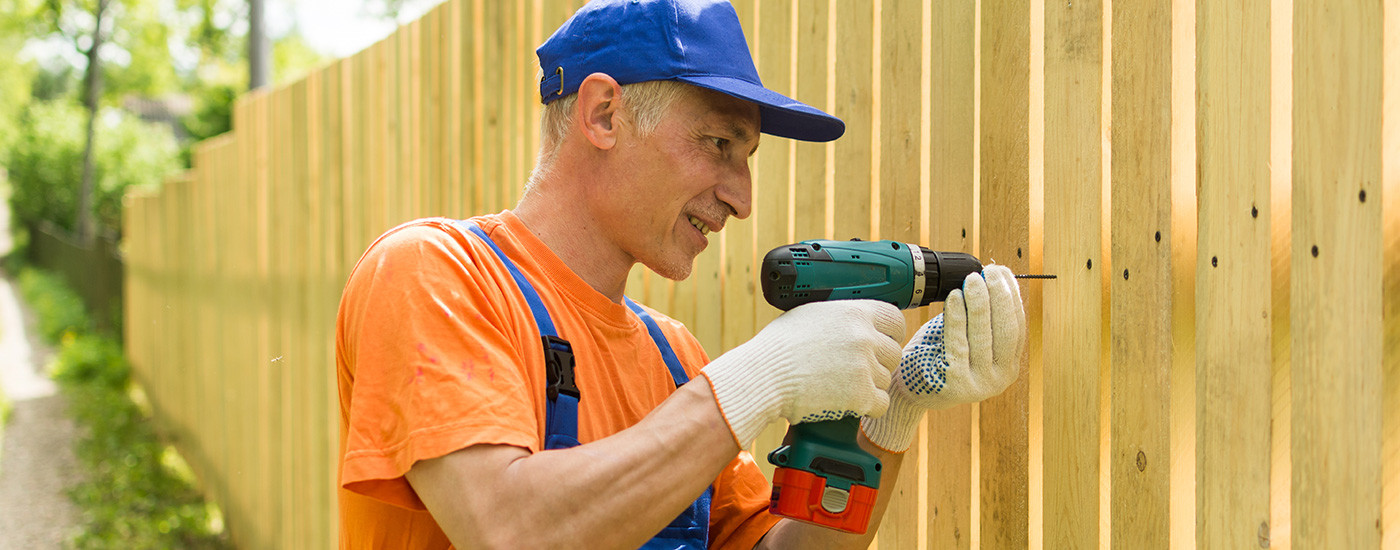It is important to thoroughly check your timber fences for damage on a regular basis, in order to detect any problems as early as possible. In this way, action can be taken that may prevent you having to replace your entire fence at considerably more cost. The following are common areas of damage that are relatively straightforward to repair.
Check timber fence posts and panels for splits and cracks
Minor cracks and splits can be filled using specialist outdoor wood glue – simply remove any debris and fill the split with the glue. Clamp the treated wood in place and leave overnight to give the glue time to set.
Check timber fence posts and panels for rot
Rotten fence posts or fence panels will need to be replaced to prevent the rot from spreading. To replace a rotten fence post, dig the old post out completely and clear the post hole of debris, wooden splinters and any pieces of concrete remaining. Place a new post into the hole, making sure to use a pressure treated wooden post to reduce the risk of future rotting. Follow our step by step guide to erecting a fence to set the post securely and straight in the hole.
To replace a rotten fence panel, remove the old panel carefully without causing damage to the posts or other panels, before attaching the new panel.
Check if your fence is wobbling or leaning
A common problem, particularly following storms, a wobbly fence is relatively simple to address, often needing nothing more than the timber posts to be reinforced. This can be done in different ways:
Concrete repair spurs can be secured with Postcrete into the ground next to the wobbly fence post and attached to it with bolts, or
A fence post support spike can be driven into the ground in place of the post and the post inserted into it and secured with retaining bolts. The spikes are a great way to stabilise wooden posts in normal soil conditions, but for posts that are set in concrete, a metal repair spur should be used. See our blog to find out how to reinforce wooden fence posts.
However, if your fence is wobbling or leaning because of rotten fence posts wearing away, then the posts will need to be replaced.
Where damage through rot is concerned, prevention is better than cure and the following steps will help prevent it for as long as possible.
Steps to prevent a timber fence from rotting
Pressure treated timber fencing – pressure treatment will protect timber against the risks of rot and decay, as well as infect infestation, another cause of weakened fencing.
Regular maintenance of timber fencing – delay the onset of decay by applying a protective timber treatment to your shed on an annual basis. Protek Shed and Fence is an eco-friendly product, completely safe to use around children and pets, that weatherproofs with just one coat.
Lift the fence panel away from the ground – make sure nothing is allowed to gather at the bottom of your fence such as leaves or grass cuttings, that could rot down and infect the timber. Clear debris regularly and create a barrier between the fence panels and the ground with concrete gravel boards or timber gravel boards. To safeguard the wellbeing of our beloved hedgehog population, timber gravel boards can be supplied with a small hole cut out, allowing them to pass safely from garden to garden when looking for food.
Timber fence supplies from Witham Timber
All our timber fence supplies are manufactured from pressure treated timber sourced from sustainable forests and our repair spurs are manufactured from steel reinforced concrete or powder-coated metal. Our blog has many helpful fencing articles and our friendly sales team is always available to answer any questions via email at sales@withamtimber.co.uk or over the phone on 01205 359188.

